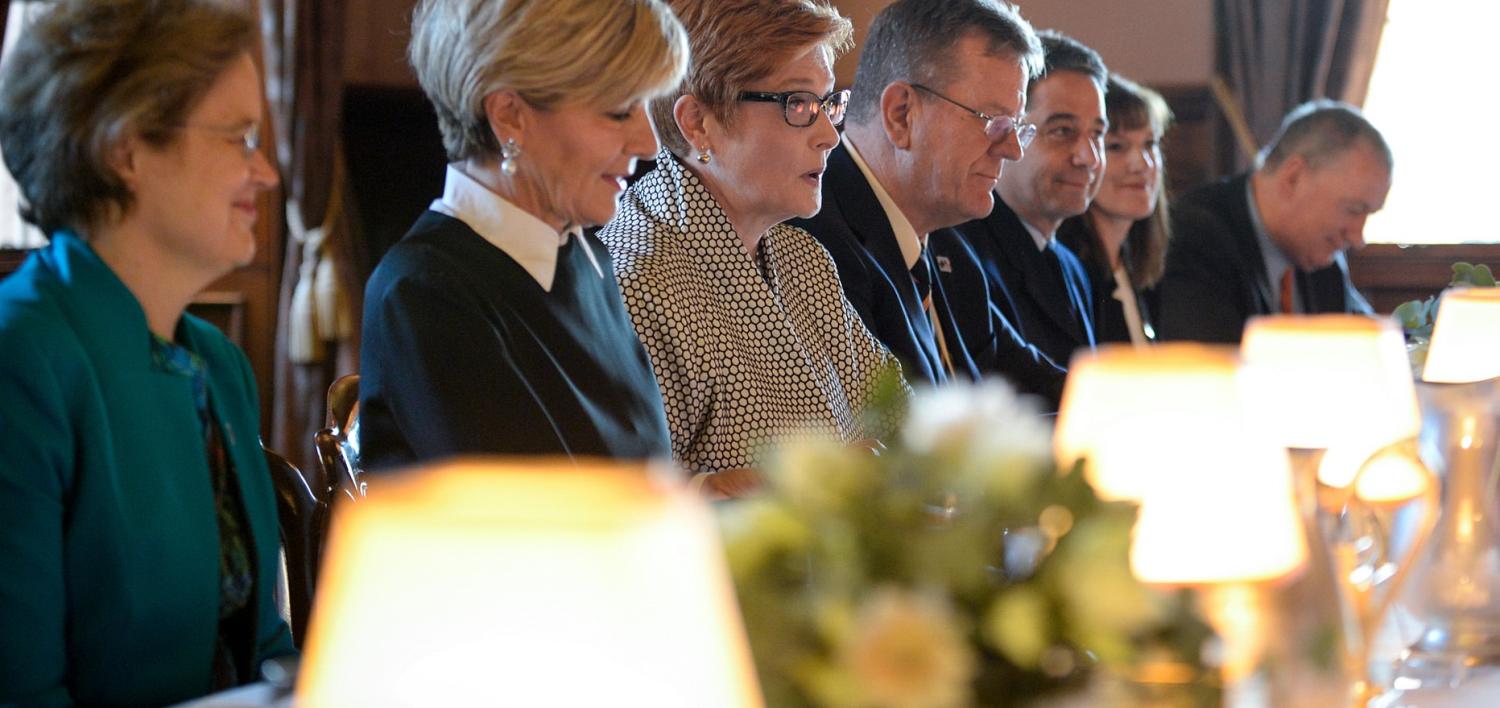The Foreign Policy White Paper has much to commend it, not least its analysis of the changing and challenging global and regional environment and its embrace of a ‘whole-of-government’ approach to Australia’s international interests. But if there are few questions to be asked in these areas, there is a need to explore the weight which the Paper attaches to international rules, rules based orders and indeed ‘values’.
Neither as a matter of principle nor in terms of Australia’s interests can this emphasis be questioned. Rather, the question is about why the ‘rules-based order’ concept has become so prominent in the argot of Australian policy. It’s a question which pre-dates last week’s Foreign Policy White Paper. Kevin Rudd used the term when he was prime minister, and then very frequently as foreign minister. Bob Carr eschewed it, but his successor, Julie Bishop, has used it increasingly since 2014.
‘Rules-based order’ was not used at all in Foreign Policy or Defence White Papers prior to 2009. The Defence White Papers of 2009 and 2013 included eleven references to the term, then the 2016 Defence White Paper, in identifying the ‘rules-based order’ as one of Australia’s three core strategic interests and linking the concept to Australia’s alliance with the United States, referenced it no less than 56 times.
Last week’s Foreign Policy White Paper, while adopting a less expansive view of the ‘rules-based order’ than its 2016 Defence counterpart and, on a quick count, offering only 12 specific references to the ‘rules-based order’, nevertheless refers to ‘rules’ on at least 42 other occasions, to ‘international law’ 22 times and to ‘values’ 17 times – all in addition to numerous references to ‘principles’, ‘norms’ and ‘standards’.
It’s not that conceptually the ‘rules-based order’, in whatever words, is new to Australian policy. The White Paper refers to Australia’s 'long record of helping to develop the rules-based component of the global order', citing our role in establishing the United Nations in 1945 and our 'leading role in setting new rules and norms' in a number of areas since. This is a significant acknowledgement given that, historically, Labor governments have been more associated with this kind of internationalism while Coalition governments, though never disowning it, have been more sceptical and more bilaterally focussed – think Tony Abbott’s 'less Geneva more Jakarta'.
Nor is the ‘rules-based order’ emphasis unique to Australian policy rhetoric – the term has been used increasingly among some Europeans, and by American liberals, and has also been employed by Japanese spokesmen and at times by Indians and Singaporeans. But for others in the region the term is treated warily, and many cases never used, at least in their native languages.
How then to account for the heavy focus by a Coalition government on the ‘international rules-based order’ and its associated values? Is it simply that matters so critical to Australia are at now at risk and so require renewed advocacy? Or is it, as some of Canberra’s cynics would have it, a matter of clinging to a fading past?
Or is it intended as implicit criticism of other players on the global stage? Thus, reference to ‘rules-based order’ in this region might be aimed at China in relation to the South China Sea, while use of the term in Europe alludes to Russia and its behaviour in Ukraine, and among liberals more generally – and especially economists of the globalist school, and environmentalists – it’s President Donald Trump, with his America-first neo-protectionist focus, who is the villain.
For explanation, perhaps we need look no further than one subtle but loaded sentence in the White Paper itself: 'Strong rules … are becoming more important to Australia as the distribution of power changes in the international system.'
A well-worn cliché has it that most countries adhere to most of the rules most of the time while all of us, the bigger powers especially, disregard them when national interest requires it. It would indeed be unusual for any country to deny the value of international rules. China, for one, has benefitted enormously from the ‘rules- based order’ since 1979, and knows it; it has begun trying to position itself as a champion of the order in selected areas, and even presents its South China Seas claims within a legal framework, albeit one that is alien to UNCLOS. Where Beijing, like others in the region, is most sensitive is when the adjective ‘liberal’ precedes ‘rules-based’, thus seeming to question the legitimacy of their regime.
As it happens, neither the Defence nor Foreign Policy White Papers use the term ‘liberal rules-based order’ (though the Foreign Minister has on other occasions). That nuance may not however be sufficient to allay the perception that the emphasis in last week's White Paper on rules, values and norms, and its references to the rule of law domestically, tends to differentiate Australia unduly from much of the region to which, as it makes clear elsewhere, our interests are so closely tied.
Those who are concerned by this might nevertheless contemplate these tantalising lines from the White Paper: 'We do not seek to impose values on others … (T)he Government recognises that the way states interact has never been and never will be static. Institutions, rules and forms of cooperation can and do evolve. Australia believes the institutions that support global cooperation must accommodate the greater weight of emerging powers … Australia will therefore contribute constructively to the reform of international institutions. We will remain open to proposals that might address gaps in the institutional architecture.'
Research for this article was assisted by AusCSCAP.

